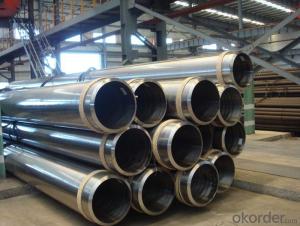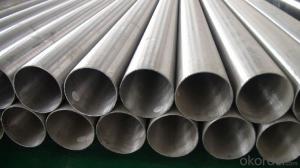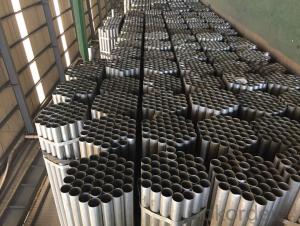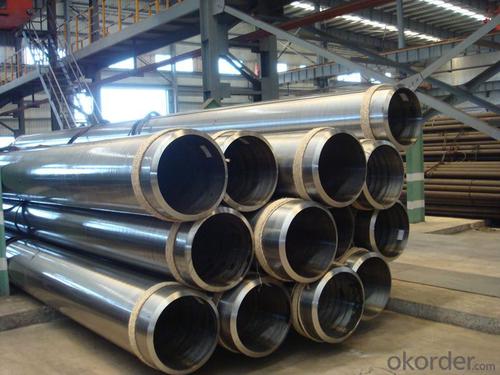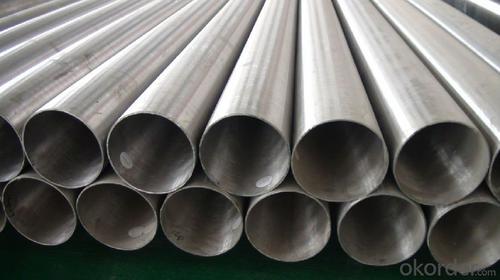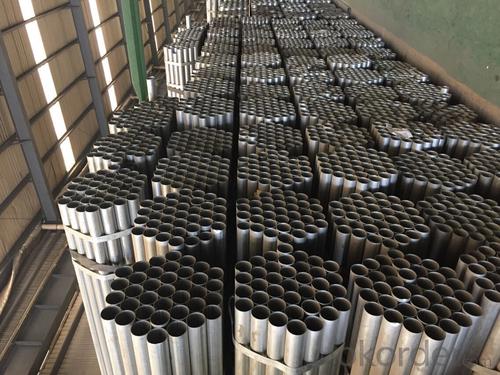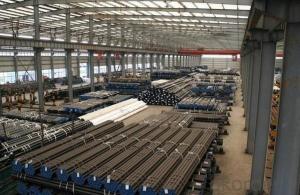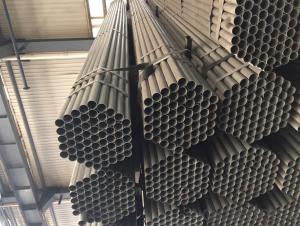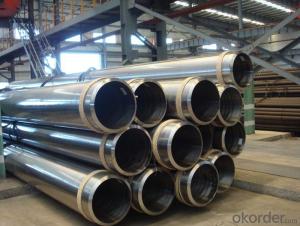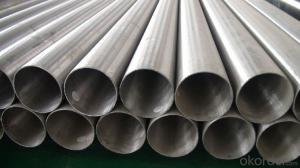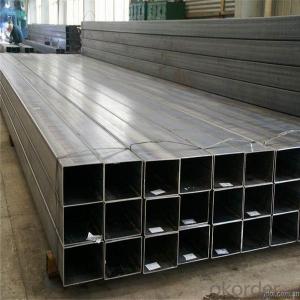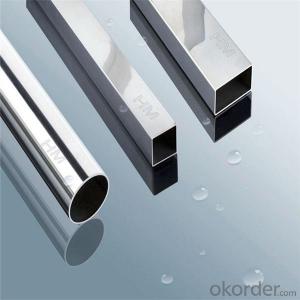Stainless Steel Welded Pipe ASTM A312/A316
- Loading Port:
- Tianjin
- Payment Terms:
- TT or LC
- Min Order Qty:
- 46 m.t.
- Supply Capability:
- 25 m.t./month
OKorder Service Pledge
OKorder Financial Service
You Might Also Like
1、Structure of /Stainless Steel Welded Pipe ASTM A316/A312Description:
Stainless steel welded pipe is actually a cover term, covering a wide range of alloy and making them suitable for different attributes that are used in a very wide and large numbers of different industries. Stainless steel pipe is resistant to erosion, highly flexible, powerful, easy to use, and can be done in distinct approaches, which means that more and more stainless steel was used as a construction material for large-scale, high impact buildings.
2、Main Features of the Stainless Steel Welded Pipe ASTM A358/A312:
• High manufacturing accuracy
• High strength
• Small inertia resistance
3、Stainless Steel Welded Pipe ASTM A316/A312Images:
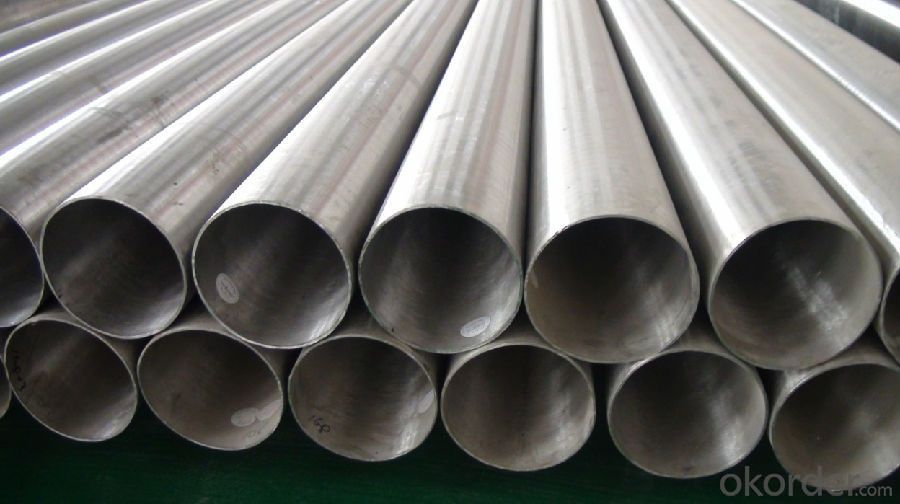
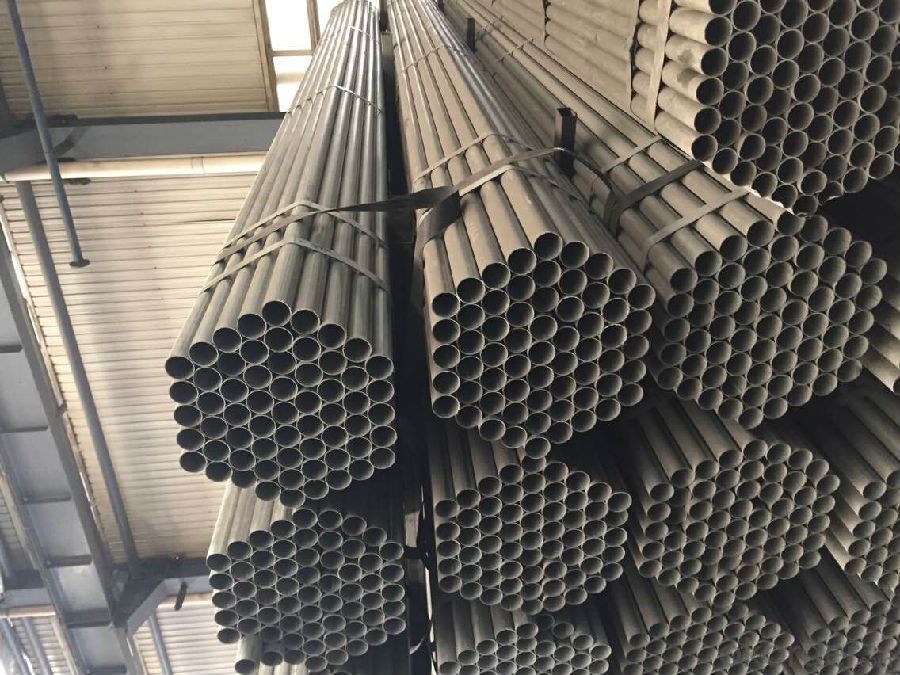
4、Stainless Steel Welded Pipe ASTM A316/A312/A778 Specification:
Size:
| Outside diameter | Outside | Thickness | |||||
| SCH 5S | SCH 10S | SCH 20S | SCH 40S | ||||
| (A) | (B) | mm | mm | mm | mm | mm | |
| 350 | 14′ | 355.6 | 3.96 | 4.78 | 7.92 | 11.13 | |
| 400 | 16′ | 406.4 | 4.19 | 4.78 | 7.92 | 12.7 | |
| 450 | 18′ | 457.2 | 4.19 | 4.78 | 7.92 | 14.27 | |
| 500 | 20′ | 508 | 4.78 | 5.54 | 9.53 | 15.09 | |
| 550 | 22′ | 558.8 | 4.78 | 5.54 | 9.53 | 15.09 | |
| 600 | 24′ | 609.6 | 5.54 | 6.35 | 9.53 | 17.48 | |
| 650 | 26′ | 660.4 | 5.54 | 7.92 | 12.7 | 17.48 | |
| 700 | 28′ | 711.2 | 5.54 | 7.92 | 12.7 | 17.48 | |
| 750 | 30′ | 762 | 6.35 | 7.92 | 12.7 | 17.48 | |
| 800 | 32′ | 812.8 | 7.9 | 12.7 | 17.48 | ||
| 850 | 34 | 863.6 | 7.92 | 12.7 | 17.48 | ||
| 900 | 36′ | 914.4 | 7.92 | 12.7 | 19.05 | ||
| 1000 | 40′ | 1016 | 9.53 | ||||
Tolerances on dimensions table:
| Tolerances on dimensions table: | ||||
| Standard | Outside(mm) | Thickness(mm) | Length(mm) | |
| ASTM A312 | ≤48.26 | -0.4 | +No special provisions(Unspecified)-12.50% | Appoint LengthDefinite cut length+6.40 |
| >48.26~114.30 | 0 | 0 | ||
| >114.30~219.08 | 0.8 | |||
| >219.08~457.20 | 1.6 | |||
| >457~660 | -4 | |||
| >660~864 | -5 | |||
| >864~1219 | -5.6 | |||
| JIS G3459 | <30.00 ±0.30≥30.00 ±1.00% | <2.00 ±0.20≥2.00 ±10% | Appoint LengthDefinite cut Length | |
| GB/T 12771 | <13.00 ±0.2013.00~40.00 ±0.30≥40.00 ±0.80% | ≤4.00 +0.50 -0.60>4.00 ±10% | 20 | |
| EN 10217-7 | D1±1.50% with±0.75mm(min)D2±1.00% with±0.50mm(min)D3±0.75% with±0.30mm(min) | T1±15.00% with±0.60mm(min)T2±12.5% with±0.40mm(min)T3±10.00% with±0.20mm(min) | ≤6000 +5.00 -06000~12000 +10.00 -0 | |
| D4±0.5% with±0.10mm(min) | T4±7.50% with±0.15mm(min) | |||
| T5±5.00% with±0.10mm(min) | ||||
| EN ISO 1127 | ||||
5、FAQ of Stainless Steel Welded Pipe ASTM A316/A312/A778:
①How is the quality of your products?
Our products are manufactured strictly according to national and internaional standard, and we take a test on every pipe before delivered out. If you want see our quality certifications and all kinds of testing report, please just ask us for it.
Guaranteed: If products’ quality don’t accord to discription as we give or the promise before you place order, we promise 100% refund.
②How about price?
Yes, we are factory and be able to give you lowest price below market one, and we have a policy that “ for saving time and absolutely honest business attitude, we quote as lowest as possible for any customer, and discount can be given according to quantity”,if you like bargain and factory price is not low enough as you think, just don’t waste your time.Please trust the quotation we would give you, it is professional one.
Any question, pls feel free to contact us !
- Q: How are steel pipes threaded for easy installation?
- The process of threading steel pipes enables convenient installation by creating grooves or ridges in the pipe, forming a spiral pattern that facilitates connection with other threaded components like fittings or valves. There are two commonly employed methods for threading steel pipes: manual threading and machine threading. Manual threading involves the utilization of a handheld tool called a pipe die. This die, equipped with sharp teeth, cuts into the pipe while it is rotated. The pipe is secured in a vise or held firmly by hand, and the die is applied to the pipe's end. As the die rotates around the pipe, threaded grooves are formed. Executing this process necessitates skill and precision to ensure accurate and properly aligned threads. In contrast, machine threading is a more automated procedure. It utilizes a pipe threading machine, which possesses a die head that automatically cuts the threads into the pipe. The machine holds the pipe securely and rotates it while the die head moves along the pipe's length, creating the threads. Machine threading is faster and more efficient than manual threading, making it ideal for large-scale production or projects. Regardless of the chosen method, it is imperative to ensure that the threads are clean and devoid of debris or burrs. This is crucial for effortless installation and to prevent leaks or other complications. Following threading, the pipes are generally inspected to ensure compliance with the required specifications. Threading steel pipes allows for uncomplicated installation as the threaded ends can be readily screwed into fittings, valves, or other pipes possessing compatible threads. This threaded connection creates a tight seal, rendering it suitable for various applications such as plumbing, gas lines, or industrial piping systems.
- Q: What does "steel pipe SC" mean?
- DN100 and "SCH80" refer to the outer diameter and the wall thickness of the steel pipe;
- Q: What are the different coating materials used for steel pipes?
- Some common coating materials used for steel pipes include epoxy, polyethylene, polyurethane, and coal tar enamel. These coatings are applied to protect the steel from corrosion and provide a barrier against environmental elements.
- Q: How are steel pipes used in the manufacturing of appliances?
- Steel pipes are commonly used in the manufacturing of appliances as they are strong, durable, and resistant to corrosion. These pipes are used for various purposes such as supply and distribution of water, gas, and other fluids, as well as for structural support and framework in appliances. They are often used for creating the internal plumbing systems, ventilation ducts, and electrical conduits in appliances, ensuring efficient functioning and reliability.
- Q: Are steel pipes suitable for offshore drilling platforms?
- Steel pipes have been widely used in offshore drilling platforms because of their strength, durability, and resistance to corrosion. These platforms operate in harsh marine environments, where they are exposed to saltwater, extreme pressure, and temperature changes. Steel pipes are capable of enduring these conditions and serving as a reliable and long-lasting solution for transporting fluids, such as oil and gas, from the seabed to the surface. Moreover, the ability to weld steel pipes together facilitates their easy installation and maintenance on offshore drilling platforms. In conclusion, steel pipes have proven to be an appropriate choice for offshore drilling platforms due to their robustness and ability to withstand the challenging conditions of the marine environment.
- Q: Are steel pipes suitable for transporting gas?
- Yes, steel pipes are suitable for transporting gas. They have high strength and durability, making them capable of withstanding the pressure and stress involved in gas transportation. Additionally, steel pipes have excellent resistance to corrosion, ensuring the safety and integrity of the gas being transported.
- Q: Can steel pipes be used for bridge piling?
- Yes, steel pipes can be used for bridge piling. Steel pipes provide several advantages for bridge piling, such as high strength, durability, and resistance to corrosion. They can be driven deep into the ground to provide a stable foundation for the bridge structure, making them a suitable choice for bridge piling applications.
- Q: How are steel pipes used in underground drainage systems?
- Steel pipes are commonly used in underground drainage systems due to their durability and strength. They are used to transport wastewater, stormwater, and other liquids away from buildings and infrastructure to a designated discharge point. The steel pipes provide a reliable and long-lasting solution, ensuring the efficient flow of water and preventing any potential leaks or damage to the surrounding environment.
- Q: What are the safety measures to consider when working with steel pipes?
- When working with steel pipes, it is important to consider several safety measures. Firstly, wearing appropriate personal protective equipment (PPE) such as gloves, safety glasses, and steel-toed boots is crucial to protect against potential injuries. Secondly, ensuring proper ventilation in the work area is important to avoid inhalation of harmful gases or fumes. Additionally, practicing proper lifting techniques and using mechanical aids when handling heavy pipes can prevent strains or back injuries. It is also essential to be cautious of sharp edges or protruding objects on the pipes and to secure them properly to prevent accidents. Lastly, following established safety protocols, such as conducting regular inspections and adhering to lockout/tagout procedures, helps minimize the risk of accidents or equipment malfunctions.
- Q: How do you prevent steel pipes from freezing?
- To prevent steel pipes from freezing, there are several measures you can take: 1. Insulate the pipes: Use foam insulation sleeves or wrap the pipes with insulation tape. This will help maintain the temperature of the pipes and prevent them from freezing. 2. Seal any gaps or cracks: Inspect the area around the pipes and seal any gaps or cracks with caulk or expanding foam. This will prevent cold air from entering and freezing the pipes. 3. Install heat cables: Heat cables can be wrapped around the steel pipes to provide a steady source of heat. These cables can be controlled by a thermostat, ensuring that the pipes stay above freezing temperature. 4. Keep the temperature above freezing: In areas where extreme cold weather is common, it is advisable to keep the indoor temperature above freezing, even if the property is vacant. This will help maintain a suitable temperature for the pipes and prevent freezing. 5. Open cabinets and faucets: In particularly cold weather, open cabinet doors in kitchens and bathrooms to allow warm air to circulate around the pipes. Additionally, allowing faucets to drip slightly can also prevent freezing by keeping water flowing. 6. Drain the pipes: If you are leaving your property unoccupied during freezing weather, it is recommended to drain the pipes completely. This can be done by shutting off the main water supply and opening all faucets until no water remains. This minimizes the risk of freezing and potential damage. Remember, prevention is crucial in protecting steel pipes from freezing. By implementing these measures, you can significantly reduce the risk of frozen pipes and potential costly repairs.
Send your message to us
Stainless Steel Welded Pipe ASTM A312/A316
- Loading Port:
- Tianjin
- Payment Terms:
- TT or LC
- Min Order Qty:
- 46 m.t.
- Supply Capability:
- 25 m.t./month
OKorder Service Pledge
OKorder Financial Service
Similar products
Hot products
Hot Searches
Related keywords
